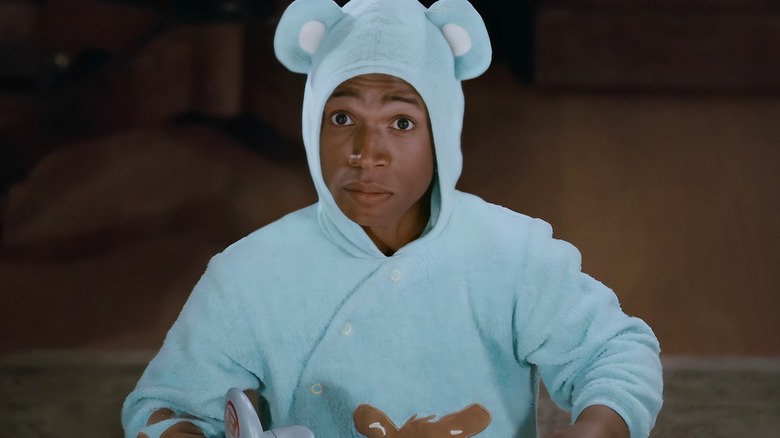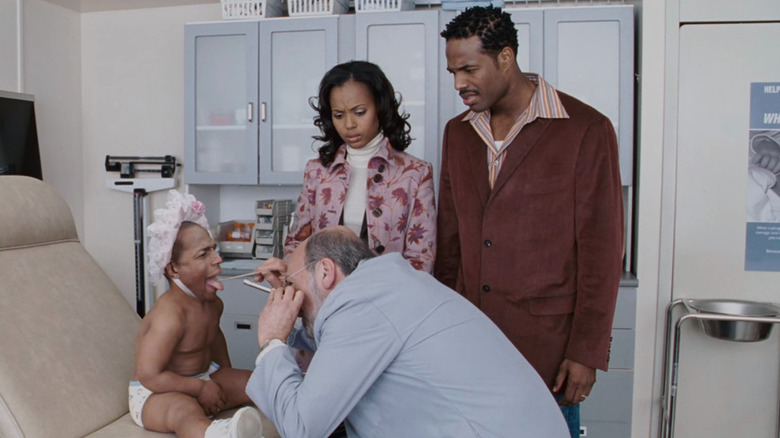Little Man: The Wayans Brothers Flop That's Hitting A Growth Spurt On Netflix
The 2000s were a prolific time for the comedic Wayans Brothers, with box office successes such as the "Scary Movie" franchise and "White Chicks," while far from critical darlings, having gained cult followings over the years. But there's a chance that one of their better-forgotten efforts from the era, "Little Man," might have recently come across your radar. The film currently ranks ninth on Netflix's Top 10 Movies in the U.S., alongside titles such as "Bridesmaids," "Annihilation," and "Titanic."
Released in 2006, "Little Man" stars Marlon Wayans as criminal Calvin Simms, who also happens to be a little person. When a diamond crime goes wrong, Calvin disguises himself as an infant to infiltrate the home of Darryl (Shawn Wayans) and Vanessa Edwards (Kerry Washington) in order to retrieve the valuable gem. The Keenen Ivory Wayans-directed comedy went on to become a box office hit, earning more than $104 million worldwide.
The film was torn to shreds by critics, which is perhaps best reflected by its 12% Tomatometer score on Rotten Tomatoes, with the consensus reading, "Another gimmicky comedy from the Wayans brothers, Little Man comes with the requisite raunchiness, but forgot to bring the laughs." To add insult to injury, "Little Man" was nominated for seven Golden Raspberry Awards and won three, including a worst actor win for both Marlon and Shawn Wayans. As odd as its current success on Netflix might seem given its unsavory origins, the grand ambitions of the film's team may be even more jaw-dropping.
Little Man was seen as a game-changer by its cast and crew
"Little Man" may not be the first film to come to mind when thinking of cinematic technical triumphs, but nevertheless, the film was somewhat of an ambitious undertaking for its time. Based on the 1954 Looney Tunes cartoon "Baby Buggy Bunny," the film realized the concept of a bank-robbing little person disguised as a baby through the use of Marlon Wayans' head being digitally attached to the body of 9-year-old actor Linden Porco.
The effects were accomplished by London's Moving Picture Company with visual effects supervisor Alex Bicknell and visual effects producer Rob Yamamoto taking charge. Porco and the rest of the cast would shoot on set normally. Then, using rough cuts of the film and a special video layering system, the team shot Marlon Wayans' head separately on a green screen and both elements were composited together afterward.
The technique, while nothing new for the time, was pushed to its very limit with "Little Man." "I believe it's never been done to this scale in a motion picture before and it's the first time it's been used for the lead character throughout a film," Bicknell said in an interview with Celebrity Wonder. "Here we were actually working with and creating the [principal] character. Every shot of Calvin was a visual effect." "Little Man" is surely not everyone's top Netflix pick, but it's worth paying respects to the tireless team behind it.

